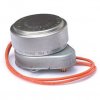Can someone please give me a brief overview of how timers, thermostats and boilers all interact in an CH system. For example, my set up is as follows:
I have a gravity feed CH system being serviced by a Baxi Solo HE Condensing boiler
I have a Horstmann Channelplus H27XL2 channel timer
I have a wireless Horstmann HRT4-ZW and thermostat sender and ASR-ZW receiver
At the boiler I have 2 motorized zone control valves and a thermostat on my hot water cylinder
When the timer comes on how does this interact with the thermostat? Can I assume that it determines the setting of the room verses the temperature required. If heat is required it informs the boiler to activate. Once room temperature has been reached then cease heating the boiler.
What I’m trying to understand is the timer just a basic on/off switch with no bearing on boiler activation?
If the thermostat is wireless and this talks to a receiver how does the receiver send that signal to the boiler to switch on/off depending on what the thermostat is set at
How do motorized zone control valves actually work i.e. what do they do and do they have any impact on boiler activation on/off?
Does the thermostat on the hot water cylinder instruct the boiler to activate/deactivate when water has reached the desired temperature? It’s currently set at 60 degrees
Thanks JD
I have a gravity feed CH system being serviced by a Baxi Solo HE Condensing boiler
I have a Horstmann Channelplus H27XL2 channel timer
I have a wireless Horstmann HRT4-ZW and thermostat sender and ASR-ZW receiver
At the boiler I have 2 motorized zone control valves and a thermostat on my hot water cylinder
When the timer comes on how does this interact with the thermostat? Can I assume that it determines the setting of the room verses the temperature required. If heat is required it informs the boiler to activate. Once room temperature has been reached then cease heating the boiler.
What I’m trying to understand is the timer just a basic on/off switch with no bearing on boiler activation?
If the thermostat is wireless and this talks to a receiver how does the receiver send that signal to the boiler to switch on/off depending on what the thermostat is set at
How do motorized zone control valves actually work i.e. what do they do and do they have any impact on boiler activation on/off?
Does the thermostat on the hot water cylinder instruct the boiler to activate/deactivate when water has reached the desired temperature? It’s currently set at 60 degrees
Thanks JD






